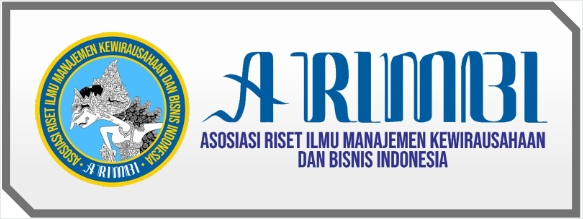Kontribusi Ilmu Manajemen dalam Pengembangan Customer Relationship Management (CRM)
DOI:
https://doi.org/10.30588/jmp.v2i1.78Keywords:
relationship management, multi-source, hybrid ccienceAbstract
Often found, that not all companies or businesses offering a product that they sell to realize the importance of a service to consumers. This could happen due to the many aspects of customer satisfaction, or products sold is a superior product or a great demand by consumers, so companies do not have anxiety or fear of abandonment by consumers. This paper attempts to reveal how management science has contributed to the marketing management in this system of CRM (Customer Relationship Management), which can be used by businesses to determine how these measures or ways to serve consumers, so that consumers feel satisfied, even become loyal customers and this will positively impact the company’s survival. CRM (Customer Relationship Management) which is a customer relationship management company is required to conduct a business or a strategy to serve customers well. CRM role here is not limited to customer satisfaction, but even further customers can continue to purchase products and or services that companies offer, so that with the implementation of CRM, the company can serve customers well and maintain customer loyalty. With the CRM is an evidence that the effect of the development of management science now filed under social sciences is very strong, which was initially characterized by the approach of a strong math and engineering. Until now, the influence of the more powerful approach, although the contribution of other social sciences also increasing. The condition makes multisources management as a hybrid science becomes stronger and attracts many people to learn and even more so of great benefit. The tendency of the environment to be hyper-competitive economy, the role of science greater getting out of a variety of problems or crises.References
Albers, Henry H. (1969). Principles of Management: A Modern Approach. Wiley and Sons, New York.
Drucker, Peter F. (1954). The Practice of Management. Harper & Brothers Publishers, New York.
Dyche, Jill. (2002). The CRM Handbook. Addison-Wesley, USA.
Fornell, C., J.D. Michael, A.W. Eugene, C. Jaesung, & B.E. Barbara. (1996). The American Customer Satisfaction Index: Nature, Purpose, and Finding. Journal of Marketing, Vol. 60, October.
Fayol, Henry. (1949). General and Industrial Management. Sir Isaac Pitman & Sons. Ltd., London, dalam Albers, Henry H., (1969) Principles of Management: A Modern Approach. Wiley and Sons, New York.
Gulick, Luther. (1969). Notes on the Theory of Organization, dalam Albers, Henry H. Principles of Management: A Modern Approach. Wiley and Sons, New York.
Kalakota, Ravi dan Robinson, Marcia. (2001). E–Business 2.0 Roadmap for Success. Addison–Wesley, USA.
O’Brien, James. A. (2005). Introduction To Information System: Essential for The e-Business Enterprise. 11th edition. McGraw Hill, New York.
Robb, Russell. (1910). Catatan Kuliah Organisasi pada Harvard Business School, dalam Albers, Henry H.,(1969) Principles of Management: A Modern Approach. Wiley and Sons, New York.
Strene, Jim. (2000). Customer Service on The Internet: Building Relationship, Increasing Loyalty and Staying Competitive. Second edition. Wiley Computer Publishing.
Taylor, F.W. (1969). Scientific Management. Harper & Brothers Publishers, New York, 1947 dalam Albers, Henry H., Principles of Management: A Modern Approach. Wiley and Sons, New York.
Urwick L. (1943). The Element of Administration. Harper & Brothers Publishers, New York, dalam Albers, Henry H., (1969) Principles of Management: A Modern Approach. Wiley and Sons, New York.
Weber, Max (translated by A.M. Henderson and Talcott Parsons) (1947). The Theory of Social and Economic Organizations, Oxford University Press, New York dalam Albers, Henry H., (1969). Principles of Management: A Modern Approach, Wiley and Sons, New York.
Widjaja, A. Tunggal. (2000). Konsep Dasar Customer Relationship Management (CRM). Harvarindo, Jakarta.
Downloads
Published
How to Cite
Issue
Section
License
Authors who publish with Jurnal Maksipreneur agree to the following terms:
Authors retain copyright and grant the Jurnal Maksipreneur right of first publication with the work simultaneously licensed under a Creative Commons Attribution 4.0 International License that allows others to share (copy and redistribute the material in any medium or format) and adapt (remix, transform, and build upon the material) the work for any purpose, even commercially with an acknowledgment of the work's authorship and initial publication in Jurnal Maksipreneur.
Authors are able to enter into separate, additional contractual arrangements for the non-exclusive distribution of the journal's published version of the work (e.g., post it to an institutional repository or publish it in a book), with an acknowledgment of its initial publication in Jurnal Maksipreneur. Authors are permitted and encouraged to post their work online (e.g., in institutional repositories or on their website) prior to and during the submission process, as it can lead to productive exchanges, as well as earlier and greater citation of published work (See The Effect of Open Access).























